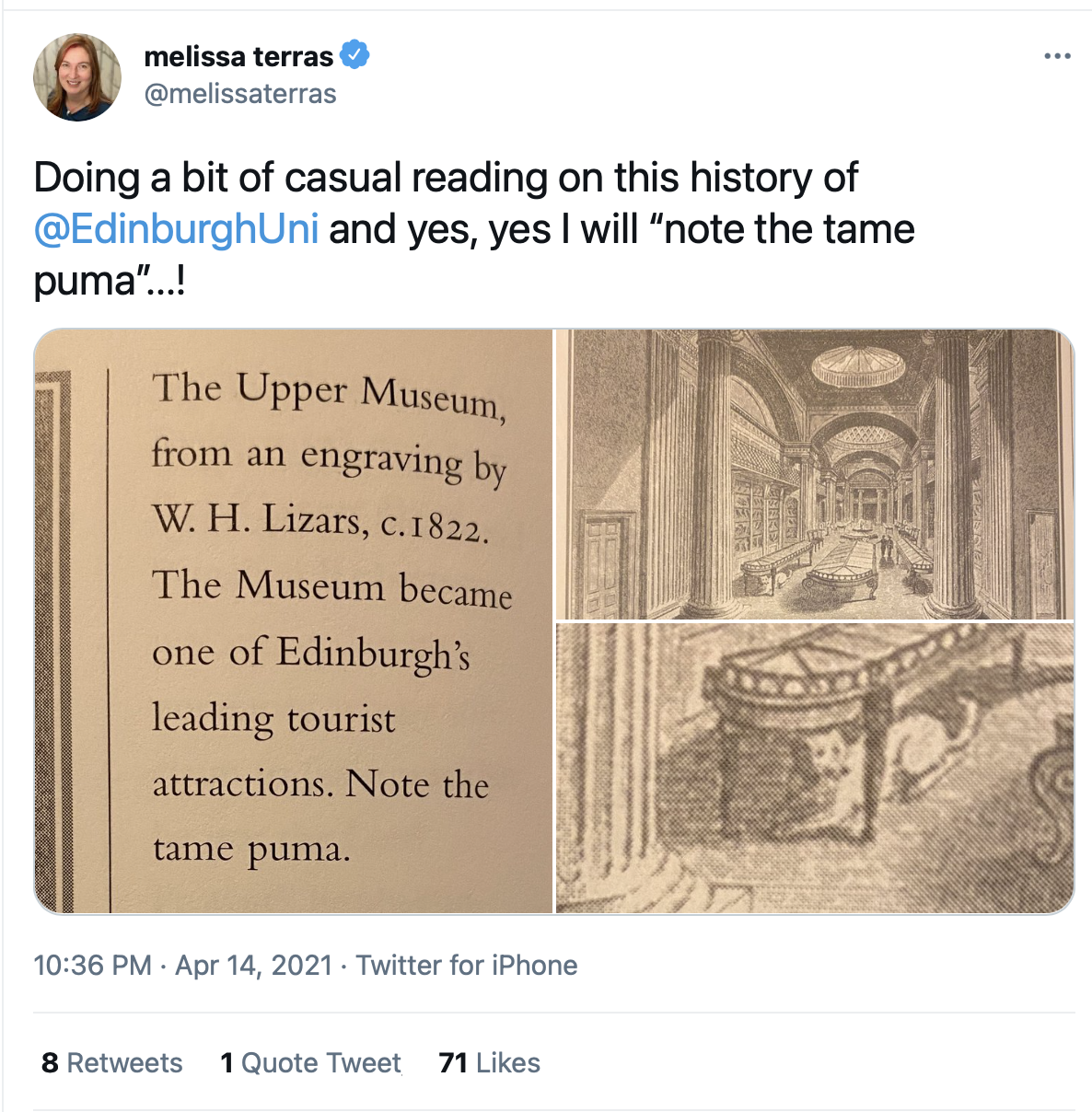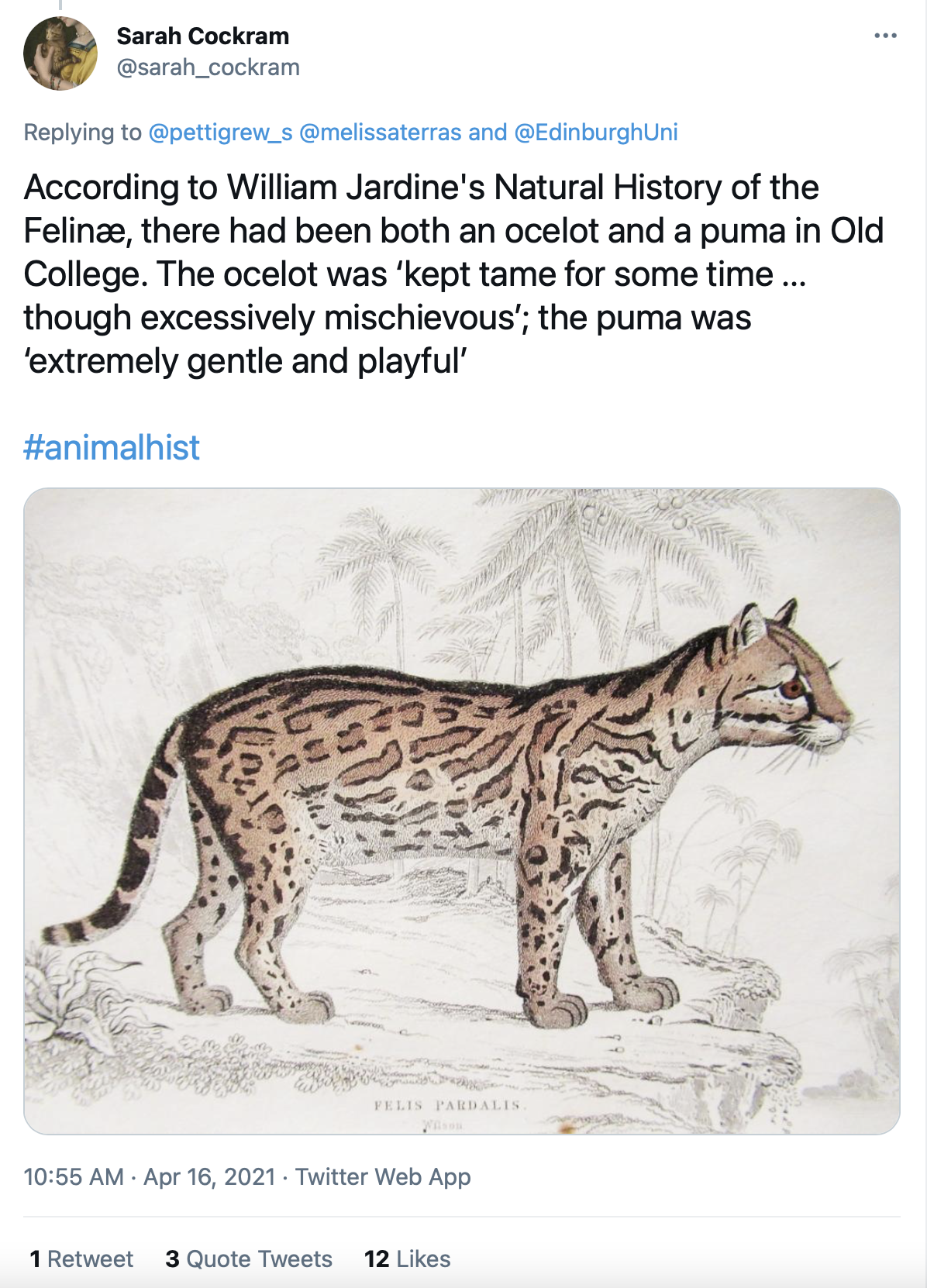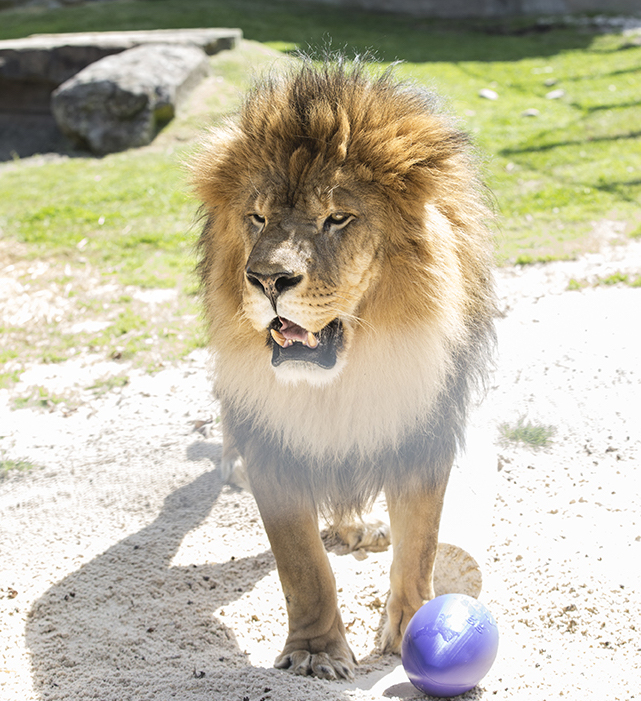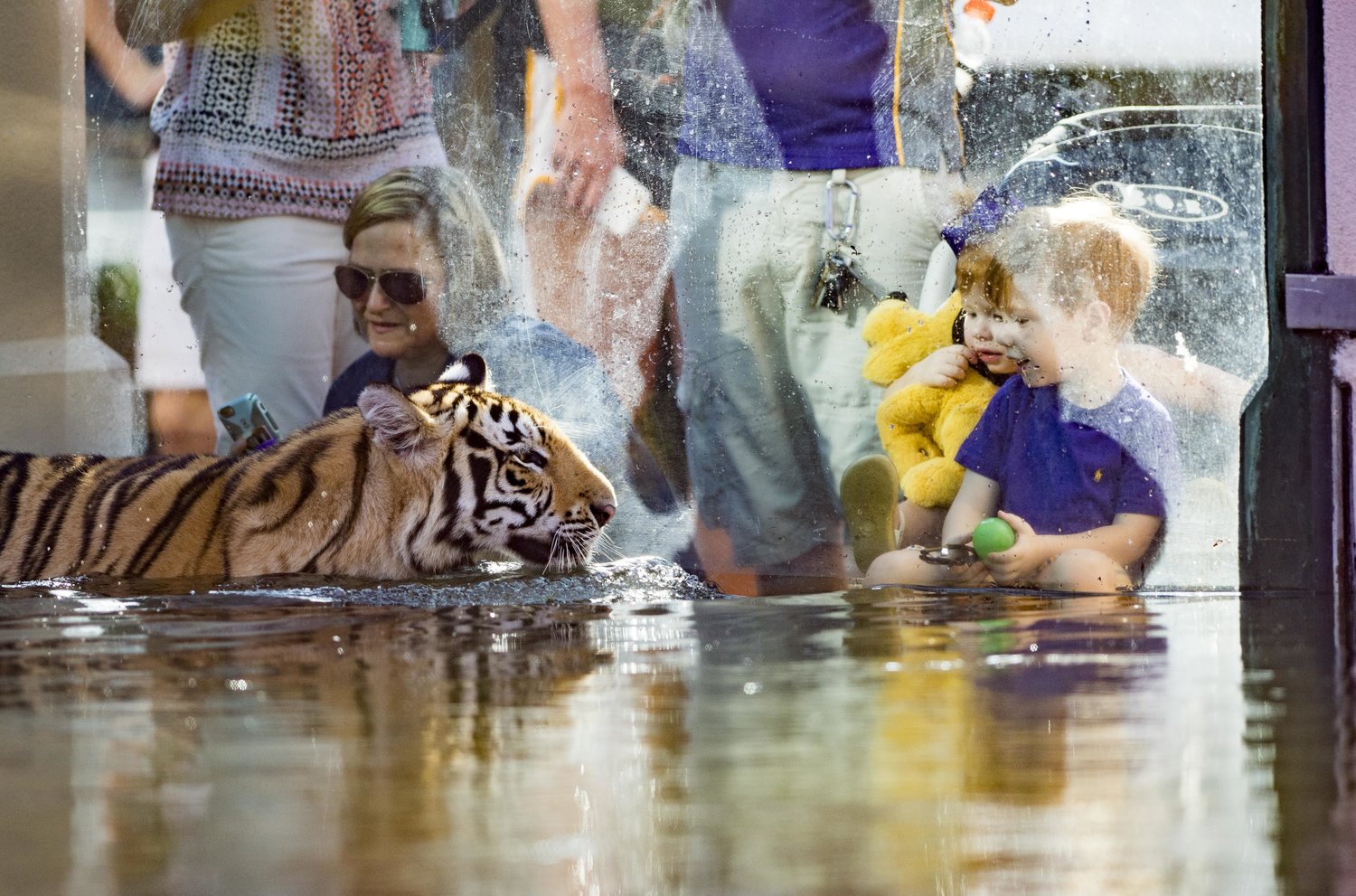I’ve reported here loads of times about beasts of one kind or another on campus, from raccoons to parakeets and from geese to squirrels and goats.
From animals in halls to prominent pets and from birds behaving badly to the Beasts of UoN, many different beasts have had prominent parts in university life.
We’ve also enjoyed a fair bit of feline action too, mainly in libraries.
But this information recently shared on Twitter really is a step up:


It reports the residency of both an Ocelot and a Puma at Edinburgh University. Those were the days.
I’d never heard of this before but the same story inspired a novel performance art work a few years back at the University too. The article provides some additional information about the University Puma:
More concrete details are revealed in an article published in the ‘University of Edinburgh Journal’ in 1976. Written by Jessie M Sweet, a specialist on the life and work of Professor Robert Jameson, it was entitled ‘The University Puma’. Sweet writes:
On 10 October 1826, William John Napier, Ninth Lord Napier, Captain of the Diamond frigate arrived at Portmouth from the South American station with some live animals including a young female puma (16 months old), two racoons, an African monkey (also a cask of fishes in spirit) which were destined for Robert Jameson’s Natural History Museum in the University of Edinburgh.
Sweet draws on the account given in James Wilson’s 1831 ‘Illustrations of Zoology’ , a copy of which is held in the University Centre for Research Collections. Wilson states that during the voyage from São Paulo:[The puma] was in habits of intimacy with several dogs and monkeys, none of which it ever attempted to injure; nor did it even return the petty insults which the latter sometimes offered; but if an unfortunate goat or fowl came within its reach, it was immediately snapped up and slain.
Following a brief stay in London, the puma arrived in Leith on 8 January 1827, dispirited by the cold weather. Although it was destined for Jameson’s collection, Wilson makes no mention of the animal living in the Museum. Rather, he describes encountering it in a lumber room elsewhere in Old College. Apparently lonely at night, the otherwise tame puma caused regular disturbances leaving Jameson to wonder what should be done with it. By the summer of that year the decision was taken to move it to a menagerie in Selkirk; the Museum Report Books – held in the Library of the National Museum of Scotland – note that the puma left the museum on 15 June, accompanied by museum attendant Archibald Wilson.
In other parts of the world big cats can still be a very real presence on campus as this 2020 story from India notes. No-one wants to meet a leopard on the way to class.
But what is perhaps the most remarkable piece of big cat action is that there appear to be a number of US universities which have kept or still keep some big cats as mascots.
The University of North Alabama for example has a large donor-funded home for its lion mascot, Leo III and you can read the full history of Leo and his predecessors here.

It does seem remarkable that a university would seek to keep such a beast on campus these days, just to be a mascot. But Leo III is not the only one.

Mike the tiger, at Louisiana State University, LSU, is another big cat mascot, the seventh in the line of tigers who has served as LSU figurehead for many years:
Mike VII, who has both Siberian and Bengal characteristics, was donated to LSU from a sanctuary in Okeechobee, Fla., called “Wild at Heart Wildlife Center.” Mikes IV, V and VI were also donated to LSU from rescue facilities. LSU has not purchased a tiger since Mike III in 1958, and LSU does not support the for-profit breeding of tigers. By providing a home for a tiger that needs one, LSU hopes to raise awareness about the problem of irresponsible breeding and the plight of tigers kept illegally and/or inappropriately in captivity in the U.S.

It’s not really clear how keeping a lone tiger in a compound as a mascot for sports teams is really helping in such a campaign against irresponsible breeding or inappropriate captivity.
At least here in the UK, Reggie the lion, who is mascot of King’s College London, is not a real big cat. This seems a little more responsible than spending large amounts of donor gifts on housing individual animals at universities.












